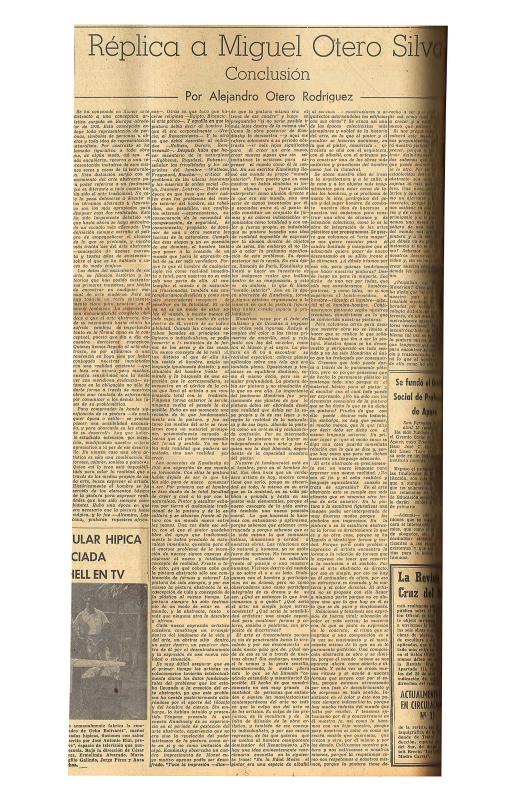In this second part of his lengthy and considered response to Miguel Otero Silva (Specific Concepts of Abstract Art), Alejandro Otero (1921–1990), being an artist used to reflecting on and writing about art, reveals his talent for argumentative [behavior] as well as his deep connection to the ideas that have driven modernity. Far from being daunted by his opponent’s rude tactics—such as revealing the provincial origins and limited education of the Venezuelan abstract artists—the painter defends the aptitude of men of humble origins to understand modern art, as long as they are raised with an awareness of the new society. He bases his analysis on Miguel’s reference to Picasso’s Guernica, through which the painter expresses his connection to the modern world.
Art and nature are both identified with vitality—which seeks renewal stead of novelty—[Alejandro uses] the images that Miguel compares, the robot and the Isla Margarita beach, to his advantage; instead of the robot, abstract art should be equated with ever-changing nature. The debate was covered abroad (Colombia, Cuba, and Argentina) and these sources have been reproduced on various occasions (1957, 1967, 1976, 1980, 1993, 2001).
To continue reading [Alejandro Otero’s] response to Miguel Otero Silva, see the ICAA digital archive: “Réplica a Miguel Otero Silva: II” [Response to Miguel Otero Silva: I] (doc. no. 1097124); y “Réplica a Miguel Otero Silva: III” [Response to Miguel Otero Silva: III] (doc. no. 1097156)].
To see more on Miguel Otero Silva’s arguments against abstract art published in 1957, see the ICAA digital archive: “I : Un Relato necesario: Conceptos concretos sobre la pintura abstracta” [I: Necessary Account: Specific Concepts of Abstract Painting] (doc. no. 855537); “II: Una división sin contenido plástico: Conceptos concretos sobre la pintura abstracta” [II: A Divergence Without Artistic Content] (doc. no. 855992); “III: Aparición y desarrollo del abstraccionismo: Conceptos concretos sobre la pintura abstracta” [III: The Appearance and Development of Abstract Art] (doc. no. 856012); and “IV: Ubicación social del abstraccionismo: Conceptos concretos sobre la pintura abstracta” [IV: Social Position of Abstract Art: Specific Concepts of Abstract Painting] (doc. no. 856031].






